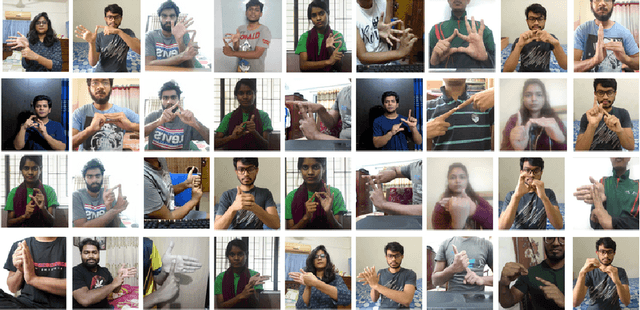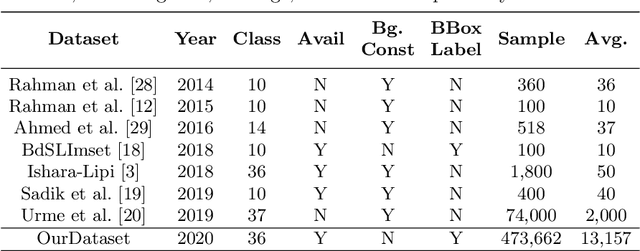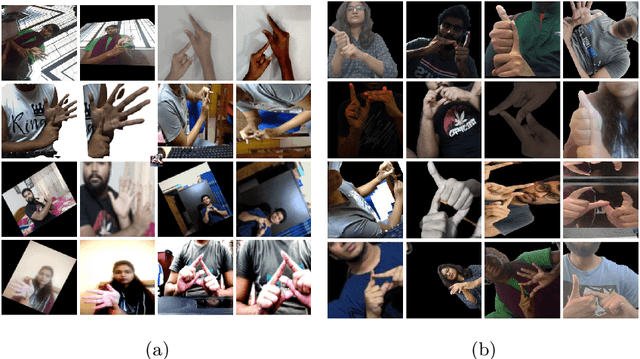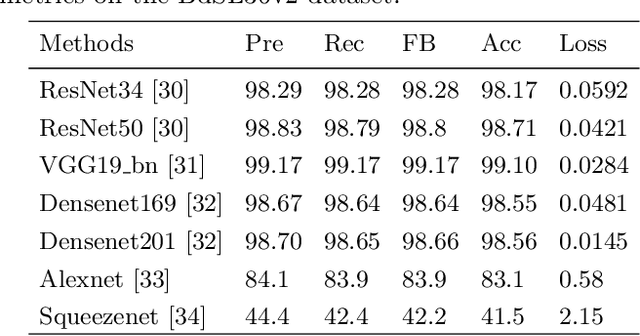Al-Farabi Akash
BdSL36: A Dataset for Bangladeshi Sign Letters Recognition
Oct 02, 2021



Abstract:Bangladeshi Sign Language (BdSL) is a commonly used medium of communication for the hearing-impaired people in Bangladesh. A real-time BdSL interpreter with no controlled lab environment has a broad social impact and an interesting avenue of research as well. Also, it is a challenging task due to the variation in different subjects (age, gender, color, etc.), complex features, and similarities of signs and clustered backgrounds. However, the existing dataset for BdSL classification task is mainly built in a lab friendly setup which limits the application of powerful deep learning technology. In this paper, we introduce a dataset named BdSL36 which incorporates background augmentation to make the dataset versatile and contains over four million images belonging to 36 categories. Besides, we annotate about 40,000 images with bounding boxes to utilize the potentiality of object detection algorithms. Furthermore, several intensive experiments are performed to establish the baseline performance of our BdSL36. Moreover, we employ beta testing of our classifiers at the user level to justify the possibilities of real-world application with this dataset. We believe our BdSL36 will expedite future research on practical sign letter classification. We make the datasets and all the pre-trained models available for further researcher.
Real Time Bangladeshi Sign Language Detection using Faster R-CNN
Nov 30, 2018



Abstract:Bangladeshi Sign Language (BdSL) is a commonly used medium of communication for the hearing-impaired people in Bangladesh. Developing a real time system to detect these signs from images is a great challenge. In this paper, we present a technique to detect BdSL from images that performs in real time. Our method uses Convolutional Neural Network based object detection technique to detect the presence of signs in the image region and to recognize its class. For this purpose, we adopted Faster Region-based Convolutional Network approach and developed a dataset $-$ BdSLImset $-$ to train our system. Previous research works in detecting BdSL generally depend on external devices while most of the other vision-based techniques do not perform efficiently in real time. Our approach, however, is free from such limitations and the experimental results demonstrate that the proposed method successfully identifies and recognizes Bangladeshi signs in real time.
 Add to Chrome
Add to Chrome Add to Firefox
Add to Firefox Add to Edge
Add to Edge